
Pekka Buttler, 08/2025
Quick summary
Pentacon – more precisely VEB Pentacon – was an East German state-owned camera and optics combinate that was very influential (also outside the East Bloc) from its inception until the demise of the East German people’s republic.
As Pentacon was not born out of thin air, any real appreciation of Pentacon – either as a camera maker or as an optics manufacturer – has to start with what came before…
Pre-WW2 developments in Silica Valley
There is little doubt that before the second world war Germany was the world leader in designing cameras, lenses, and pretty much anything else photography related. Moreover, within Germany, there was a region along the middle of the river Elbe and its tributary the Saale that would have earned the moniker Silica Valley. Just like the modern Silicon Valley, this area was a powerhouse of innovation within the still nascent photo-optic industry, housing both a plethora of camera makers (including Altissa, Balda, Certo, Ernemann, ICA, Ihagee, Kamera-Werkstätten Guthe & Thorsch, Welta, Zeiss-Ikon), lens makers (including Carl Zeiss Jena, Feinmess Dresden, Meyer-Optik Görlitz, Photowerke Dr. Staeble), and other, supporting industries (most notably specialty glass maker Schott). Cameras and Optics were booming industries, and innovations were plentiful. Even the first world war seemed to be more of a distraction, but the second world war was to have more profound effects.
1939-1945: War & Destruction
In wartime it was the norm for camera and optics companies to shelve their consumer goodie designs and instead focus on military goodies: everything from aerial reconnaissance cameras to bombsights, binoculars and periscopes. Hence also, the camera and optics industries became valid targets for aerial bombardments (not only collateral damage). The German optics industry suffered considerable infrastructure damage with several factories (both in Silica Valley and other parts of Germany) being bombed to the ground.

Another form of damage to the German camera and optics industry was the postwar decision by the allies to appropriate the entire portfolio of German patents, trademarks and copyrights as reparations. While this move was originally intended to ensure that no German military-industrial complex would rise from the ashes and to help the allies’ industries get a post-war boost, those patents were subsequently shared rather freely with the Allies’ future allies. Most importantly, once Imperial Japan had capitulated and been reconstituted as a U.S. ally, also Japanese optics companies had access to those pre-war German patents. So it came that the Japanese and German camera and optics companies started their postwar period largely with the same access to intellectual property.
But after the Second World War and the ensuing uneasy peace between the Western Allies and the Soviet Union, Silica Valley – residing in the modern German states of Thuringia and Saxony – ended up in the Soviet Zone of control, and the Soviets had more draconian ideas about what to do with their erstwhile enemies. The Soviets were not content with gaining reparations through patents and trademarks. Instead, the Soviets appropriated many factories – including machines, inventories and parts – dismantled the entire shebang and shipped them off to the Soviet union (There is some discussion on the ‘capital injection’ this gave the Soviet camera industry in the JAPB article on the Soviet lens ‘business’).
German workers returning from the front found their factories bombed out, gutted and facing an entirely new competitive landscape.
1945–1959: reconstruction, but with a twist in the East.
The first years immediately following the war were characterized by the allies’ on both sides gathering reparations and trying to make sure that Germany would not jeopardize geopolitical stability again. As tensions between erstwhile allies (the Soviet Union on one side and the western allies on the other) grew and developed into the stand-off nowadays referred to as the cold war, neither the western nor eastern masters wanted Germany to be a burden on their respective alliances. What used to be the Soviet occupation zone was reconstituted as the ‘German Democratic Republic’ or East Germany – a Soviet satellite state directly juxtaposed to the ‘German Federal Republic’ or West Germany and both these states were intended to become contributing members of their respective alliances.
As a result, German reconstruction was no longer hindered and instead invested in. In the West, companies were reconstituted along mainstream market/capitalist lines, but in the East German Soviet satellite things would be done a bit differently.
The Soviet-style East German system had no love lost for private enterprise (which was seen as tantamount to a rentier-class exploiting the proletariat), nor for companies competing for customers (which was seen as a woefully inefficient method for allocating scarce resources). Hence, most enterprises were quickly nationalised, and competing companies were continuously being forcibly merged with their erstwhile competitors. One result of this policy ended up leading to the creation of Pentacon.
1959–1968: Amalgamation into the Pentacon “Kombinat”
In 1959 an initial amalgamation created VEB Kamera- und Kinowerke Dresden. In East German language VEB stands for ‘Volkseigener Betrieb’ (Peoples’ own enterprise), in other words a state-owned enterprise. VEB Kamera- und Kinowerke Dresden was largely a renamed VEB Zeiss Ikon. In 1964 VEB Kamera- und Kinowerke Dresden was combined with
- VEB Kamera-Werke Niedersedlitz (previously Kamera-Werkstätten Charles A. Noble),
- VEB Welta-Kamera-Werk Freital (incl. VEB Reflekta-Kamerawerk Tharandt),
- VEB Altissa-Camera-Werk Dresden,
- VEB Aspecta Dresden.
To form the VEB Pentacon. The “Pentacon” name itself is a portmanteau, derived from “Penta(prism)” and “(Con)t(a)x”. A likely reason for this name was the decision of a West German court to hand hand the rights to the “Contax” trademark to the West German branch of Zeiss Ikon. After this the central planners in (East) Berlin had merged the majority of East German camera makers into one giant company (Ihagee (East), makers of the Exakta were left alone, for now).
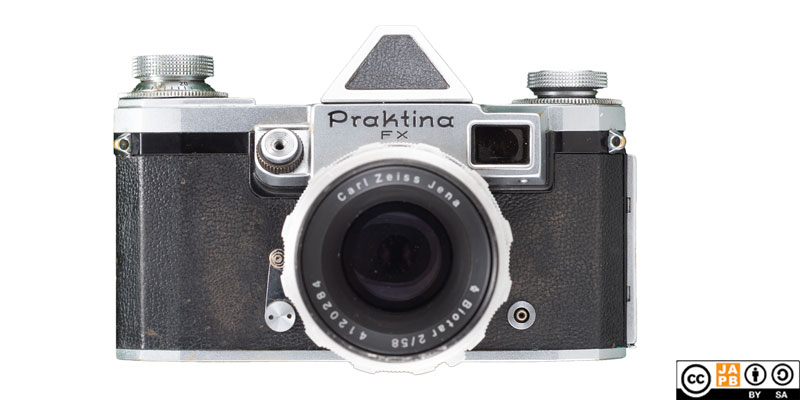
There were good reasons to believe in the potential of VEB Pentacon. Precursor models like the Kamera-Werke Praktina (1953–1960) and Praktica IV (1959–1964) as well as other East German camera products1 had gained significant traction in the market (both domestic and international). Those fortunes further improved further with the Praktica Nova-line (1964–1969) and production numbers would further skyrocket after the 1969 introduction of the Praktica L line.
The Pentacon of 1964 was however focused solely on manufacturing cameras. This meant that Pentacon’s ability to corner the world market was dependent on co-ordination with independent East German lens makers, mainly VEB Carl Zeiss Jena and VEB Feinoptishes Werk Görlitz (Meyer-Optik Görlitz). Berlin seems to have considered tighter co-ordination to have been the the next order of business. Hence, in 1968 VEB Feinoptishes Werk Görlitz2 and Ihagee3 were merged into Pentacon, making the resulting Pentacon a fully vertically integrated colossus (or, in soviet parlance, a combine, auf Deutsch: ein Kombinat).
During the next two years, lenses previously having been branded Meyer-Optik Görlitz, started leaving their factory carrying the brand ‘Pentacon’. Meyer-Optik had made some shrewd operational and design decisions, and in the post-war environment, characterised strongly by the proliferation of various SLR’s and other cameras (read: strong demand for lenses), Meyer-Optik was having a field-day. Especially in the 1960s – just prior to the merger – Meyer-Optik was very prolific in coming up with new, cutting-edge designs. This means that when Pentacon ‘took over’ Meyer’s lens catalogue, Pentacon was able to offer a broad range of cameras as well as lenses characterised by a very good bang/buck ratio.
VEB Pentacon 1968–1985
In its heyday, Pentacon was not just a massive industrial entity. By 1970, it was the center of a Kombinat, integrating nearly the entire East German camera and lens industry. Only film manufacturer ORWO and optics giant VEB Carl Zeiss Jena remained independent. Pentacon became synonymous with East German camera engineering, controlling an immense workforce and state-of-the-art facilities.
By the late 1960s the Praktica SLR series had become a staple export product and symbol of GDR manufacturing. The widespread M42 lens mount brought global compatibility, and Pentacon’s mass-production methods delivered millions of Praktica cameras – at its peak, a Praktica camera left the Dresden assembly line every 30 seconds. Praktica SLRs found loyal buyers across both Western and Eastern blocs with Prakticas owning the biggest market share in several western markets during the 70s and (ion some countries) into the eighties. At the same time as West German camera companies folded one after the other under the competitive pressure of the ascendant Japanese camera industry, the East German camera manufacturing operation managed to even challenge the Japanese competition on the global stage. Until the mid 70s, that is…
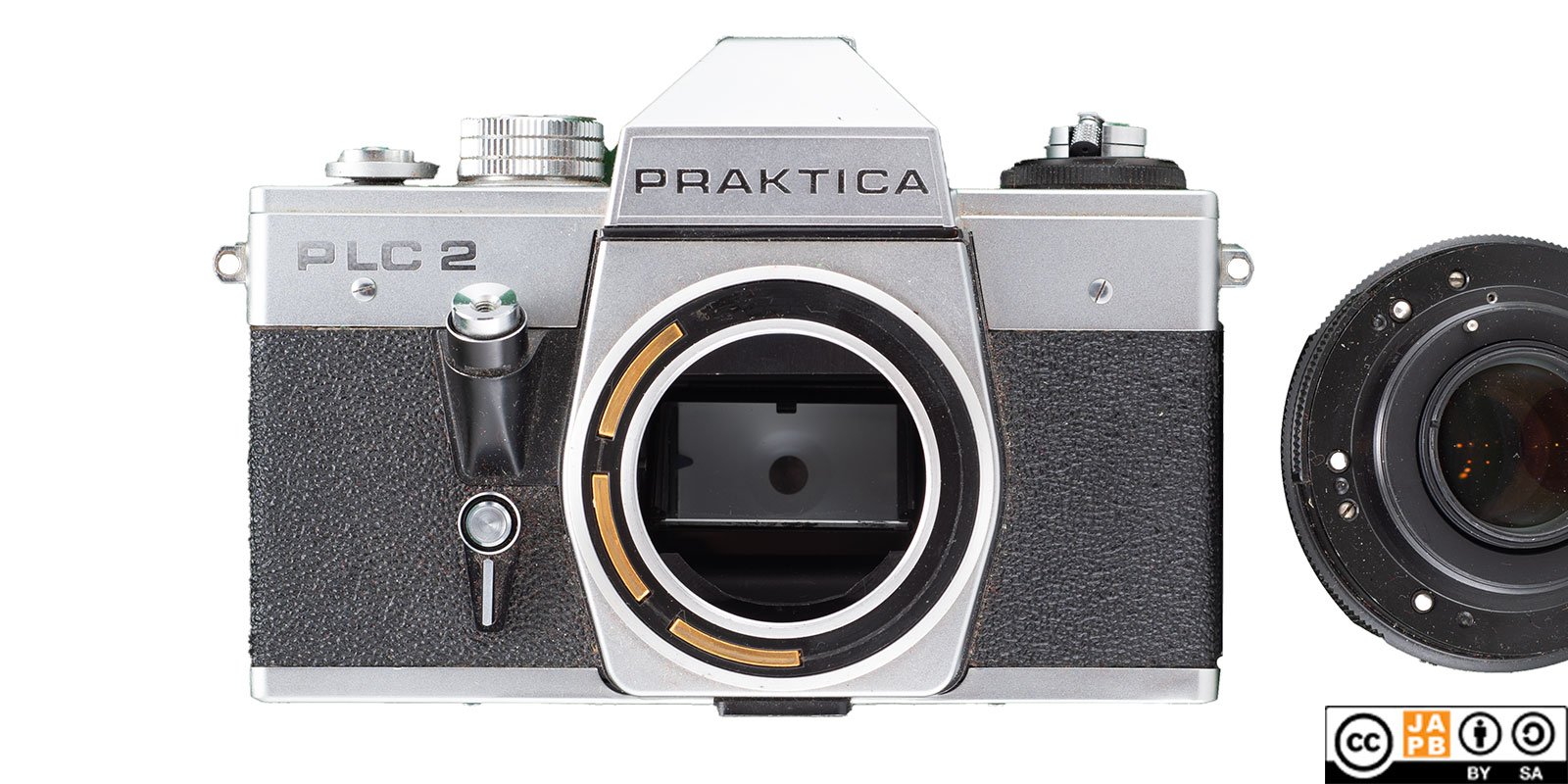
While Pentacon was clearly able to manufacture good and cost-effective mechanical cameras, the electronics would turn out to be the Achilles’ heel of the East German camera industry. Even though Pentacon had (in 1969) pioneered electronic communication between lens and camera (the M42 electric mount), Pentacon faced real challenges in adding electronics and automation to their cameras. This was partly due to the East Bloc generally lagging behind the West in electronics, but significantly exacerbated by differing priorities: dedicating electronics production to consumer comforts instead of defence technology simply did not sit well in the Soviet system. Hence as Japanese camera companies rushed headlong into the increased use of electronics, the East German camera industry fell farther and farther behind the curve. To make matters worse, the little electronic automation that was added often turned out to not stand the test of time really well.
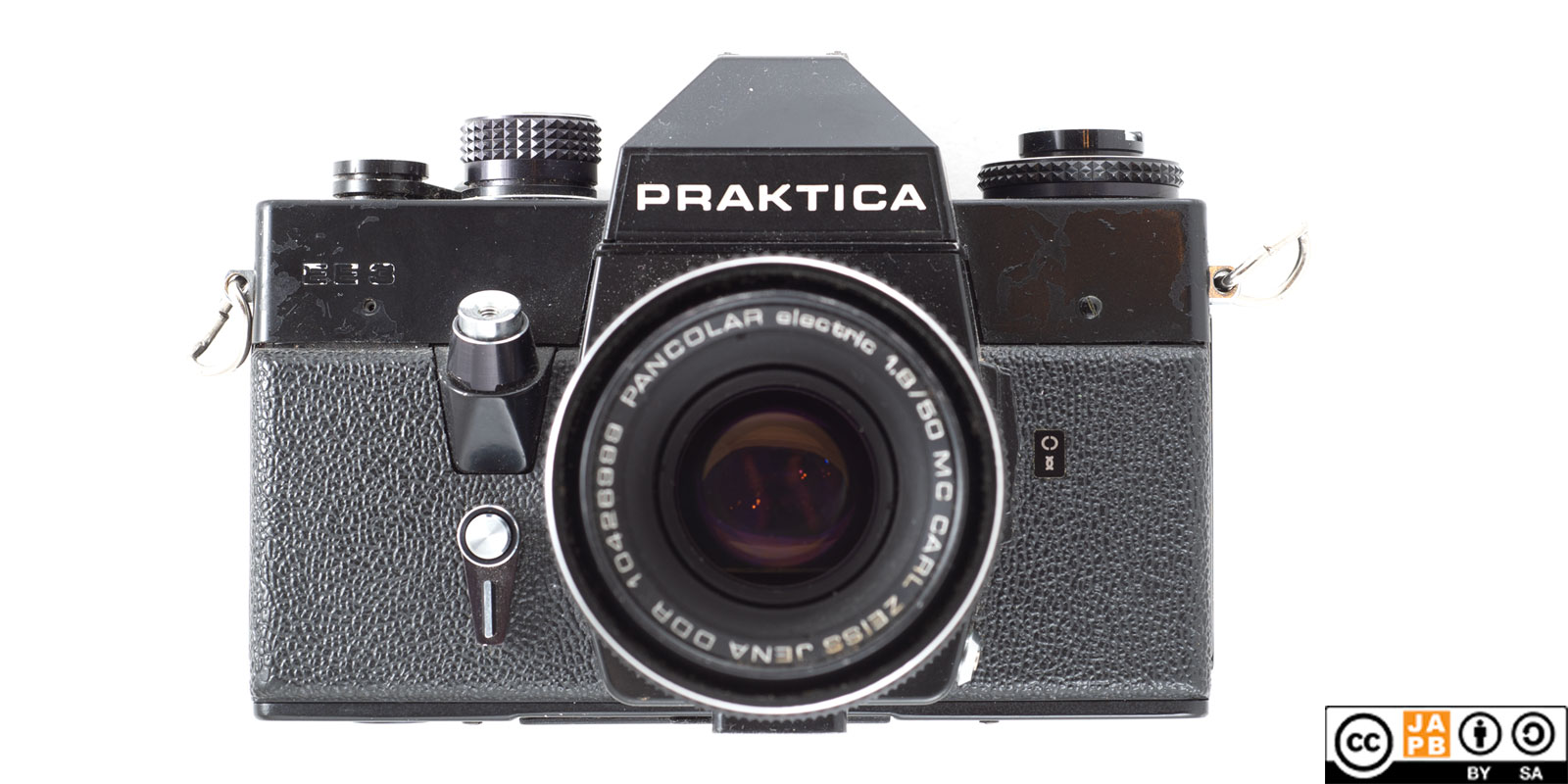
(even though the electronics work, the lettering has not been as robust).
How about the optics? Well, it would turn out in the case of Pentacon that merging the camera company with a lens company, the resulting entity was first and foremost a camera company. While Pentacon was prolific in developing both new camera designs as well as a plethora of special purpose variants, the lens designing stagnated. In the 1968-1985 period only one new lens was designed4 and only two lenses were given a major design tweak. That is not to say that the lens lineup stayed unchanged, but that changes were either focused on minor recomputations of existing designs, economically driven simplification of lens mechanics, increased use of plastics, gradual adoption of better coatings and adoption of the Praktica B mount.
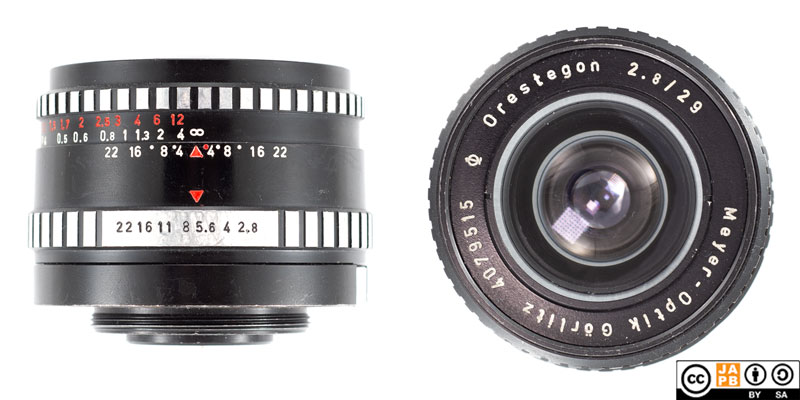

After: Pentacon auto 29 mm f/2.8
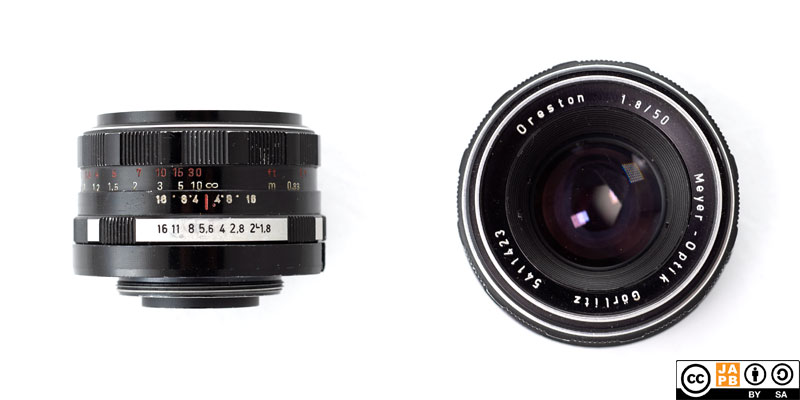
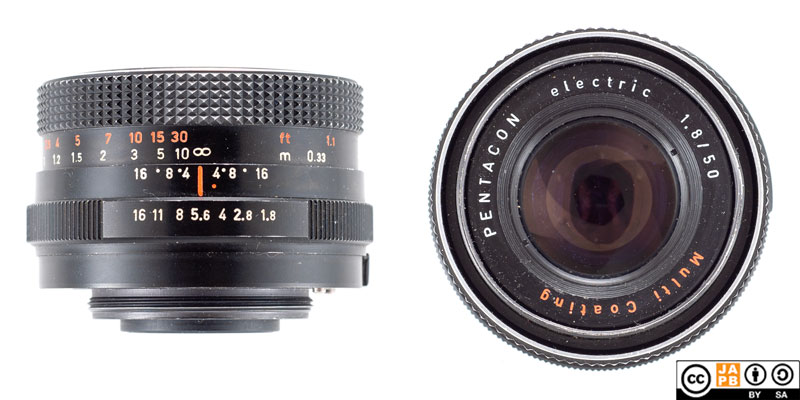
After: Pentacon auto 50 mm f/1.8

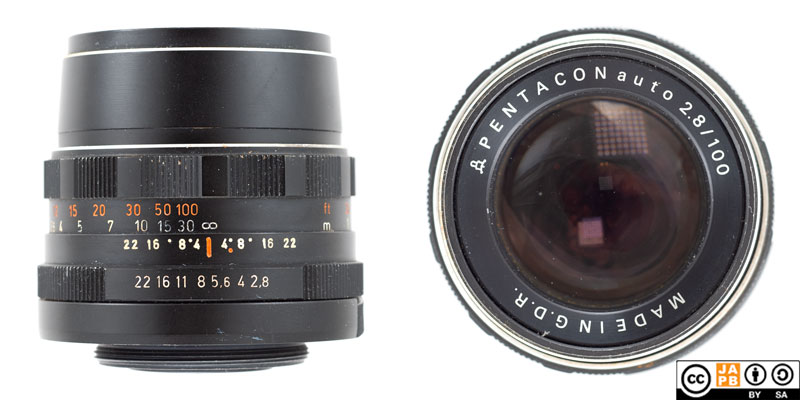
After: Pentacon auto 100 mm f/2.8

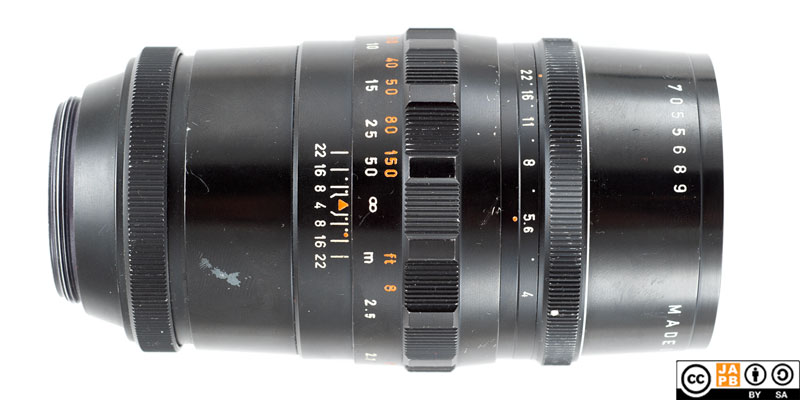
As a result, while Praktica cameras kept selling well in both the East and also in some Western countries, in the West the Prakticas kept slipping into lower and lower consumer segments. To keep up with the increasing pressure to economise, almost all product development conducted in East Germany was focused on rationalising production, going as far as outsourcing some of the production to Romania – a concept that the proud East German engineers had little admiration for. There was writing on the wall, but no-one wanted to raise their gaze and read it.
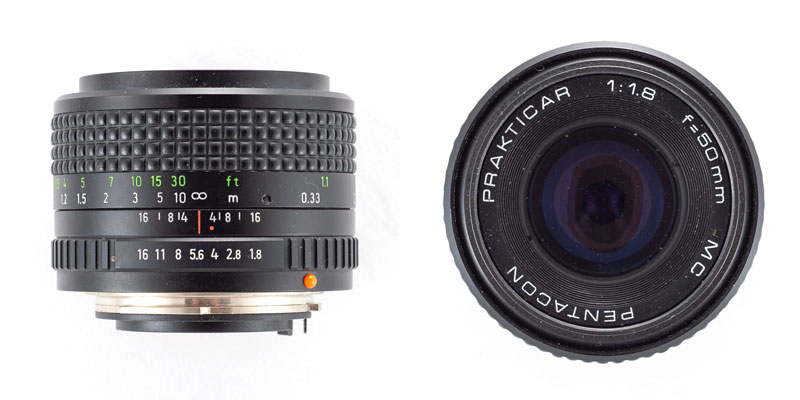

After: Pentacon Prakticar 50 mm f/1.8 (ratio, manufactured in Romania)
1985–1991: A final push…
In the mid-eighties, the logic of the cold war escalated into an increasingly high-tech tug-of-war as US President Reagan set out to spend the East Bloc into oblivion. Instead of just throwing in the towel, central planners throughout the East Bloc shifted production priorities away from consumer goodies and toward military spending. In an ironic turn, the optics colossus VEB Carl Zeiss Jena (which had supplied VEB Pentacon with high-end lenses but was first and foremost a military and industrial optics company) was slated to take over running Pentacon, likely in the hope of being able to reorient existing engineering talent into defence oriented ventures. VEB Pentacon – an entity born through mergers was itself merged into VEB Carl Zeiss Jena (this is incidentally why you can find late-era Pentacon lenses sold as “Carl Zeiss Jena” lenses. Read more here.)
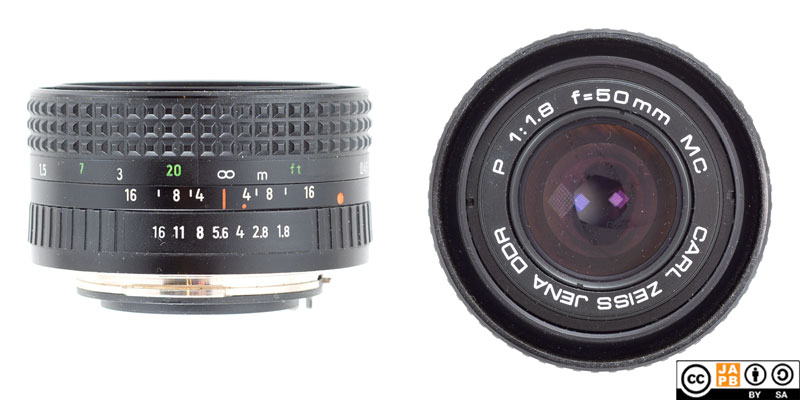
That reorientation towards defence however did not help the East Bloc (it likely rather accelerated the fall of the East Bloc), and in 1989 the Berlin wall came down, in 1990 East and West Germany were officially reunited and in 1991 the remants of VEB Pentacon were deemed surplus to requirements by the reunification’s privatisation agency. A Kombinat that at its peak employed 6000 people was handed over to a caretaker staff. However, the Pentacon and Praktica names were acquired by investors and lived on, as some production and brand rights were resurrected under new Western owners—often with manufacturing moved abroad.
Last words
The story of Pentacon—its rapid rise, consolidation under socialism, stagnation in the crossfire of global competition and centrally planned quotas, and eventual post-Cold War dissolution – mirrors the broader tale of East German industry and the complex legacy of technological ambition behind the Iron Curtain.
Sources
https://zeissikonveb.de (several pages)
https://mikeeckman.com (several pages)
https://camera-wiki.org (several pages)
https://zachhorton.com/pentacon-6-the-history-of-the-cold-war-in-a-camera-system/
https://www.cia.gov/readingroom/docs/CIA-RDP79-01093A001000080001-9.pdf
Footnotes
- like the Exakta series of SLRs, Altix series of viewfinders, Meister-Korelle medium format SLRs, Reflecta TLRs and many others ↩︎
- Interestingly VEB Feinoptisches Werk Görlitz had managed to keep branding their lenses ‘Meyer-Optik’ even though such singling out of one person (Hugo Meyer) was against the Soviet creed. ↩︎
- This merger would signal the end of the Exakta camera. The Exakta RTL 1000 launched in 1969 did have the Exakta name and the Exakta lens mount, but its innards were based on the Praktica. Moreover, it would be discontinued in 1973 and its lacklustre sales were not purely based on VEB Pentacon’s unwillingness to market it aggressively. ↩︎
- the Pentacon Prakticar 28/2.8 was a truly new design, whereas the 50/2.4 pancake launched with the Praktica B series cameras was a design found in Meyer-Optik’s design archives ↩︎